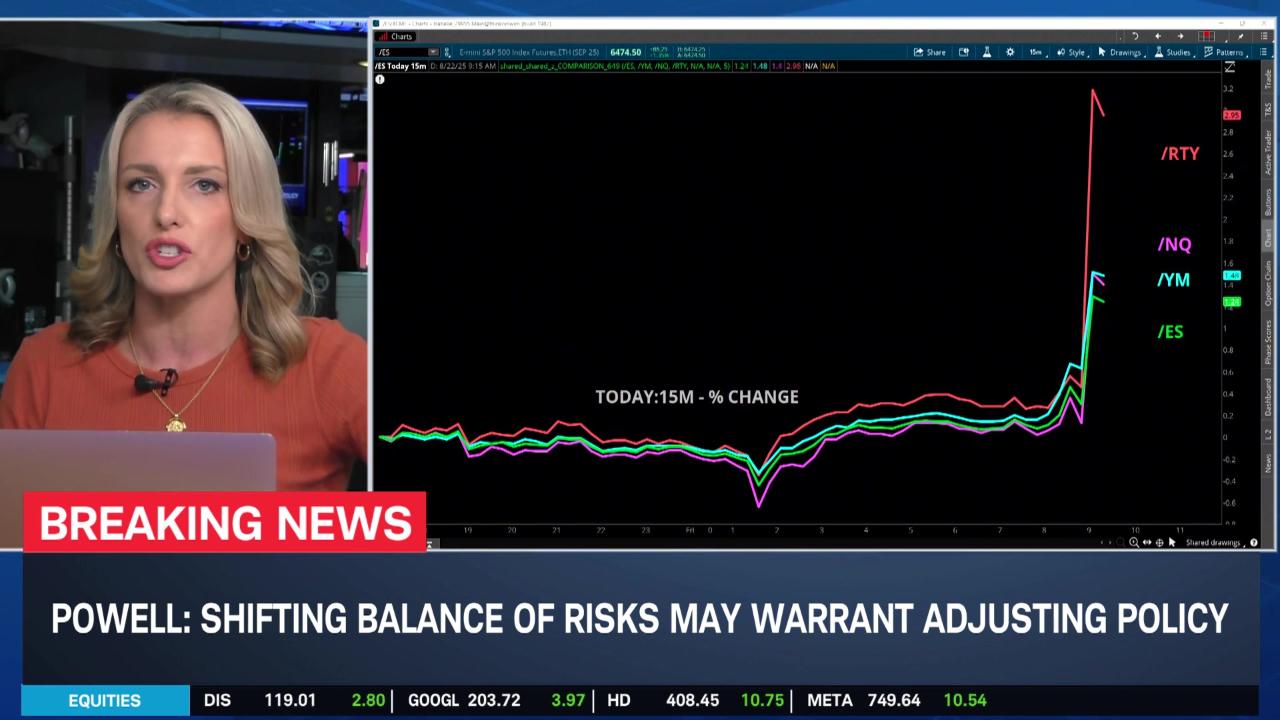- Market Minute
- Posts
- Powell Signals Conditional Easing at Jackson Hole as Markets Rally
Powell Signals Conditional Easing at Jackson Hole as Markets Rally

Jerome Powell used his Jackson Hole platform yesterday to acknowledge that the Fed’s balancing act is getting trickier, hinting that easier policy may be coming if the labor market data keeps softening. The chair said the economy has been “resilient” even as trade and immigration shifts reshape supply and demand, but he added that “the balance of risks appears to be shifting.” He emphasized that with policy still restrictive, “the baseline outlook and the shifting balance of risks may warrant adjusting our policy stance,” while stressing that decisions are not on a “preset course.” The shifting mix of upside risk to inflation, and downside risk to employment demands careful calibration across the Fed’s dual mandate.
Powell’s diagnosis rested on two evolving pressures. On the inflation side, the Fed now sees clearly visible tariff-related price increases but expects their impact to be largely one-time unless they feed into broader inflation expectations dynamics. On the employment side, the chair highlighted a “curious kind of balance” in the labor market. Job growth has slowed sharply alongside a cooling in labor supply after an immigration pullback, leaving the unemployment rate only modestly higher but downside risks rising if layoffs pick up. Powell denoted that risks of labor market weakness may be greater than the risks to inflation which is suggestive of a more dovish tilt in the upcoming policy meeting in September.
Markets read the remarks as opening the door to an autumn pivot. Stocks jumped broadly, with the S&P 500 up around 1.6% by late morning and snapping a five-day losing streak as traders boosted the odds of a September rate cut above 90%. Small caps outperformed with the prospect of cheaper funding, and the semiconductor index (SOXX) was up nearly 4% in early trading after Powell’s speech. Other interest rate sensitive sectors that showed meaningful gains included consumer discretionary, real estate, industrials and materials. Equity weakness was concentrated in consumer staples which is traditionally defensive in nature. Two-year Treasury yields fell about 10–11 basis points, while the 10-year slipped as well, a classic “dovish surprise” pattern that helped ease overall financial conditions. The dollar weakened against major peers, extending the cross-asset relief rally.
Drilling down, Powell’s specific language mattered. His assertion that downside risks to employment are “rising,” paired with the observation that policy remains in “restrictive territory,” gave investors a clearer conditional path to easing even as he preserved data dependence. Traders took that as a green light to price a greater chance of cuts at the September 16–17 FOMC meeting, contingent on the outcome of the Sept. 5 jobs report and mid-September inflation prints.
Featured Clip
Tune in live from 8 a.m. to 5 p.m. ET, or anytime, anywhere, on‑demand.
Or stream it via thinkorswim® and thinkorswim Mobile, available through our broker-dealer affiliate, Charles Schwab & Co., Inc
Please do not reply to this email. Replies are not delivered to Schwab Network. For inquiries or comments, please email [email protected].
See how your information is protected with our privacy statement.
Charles Schwab and all third parties mentioned are separate and unaffiliated, and are not responsible for one another's policies, services or opinions. Schwab Network is brought to you by Charles Schwab Media Productions Company (“CSMPC”). CSMPC is a wholly owned subsidiary of The Charles Schwab Corporation and is not a financial advisor, registered investment advisor, broker-dealer, or futures commission merchant.

